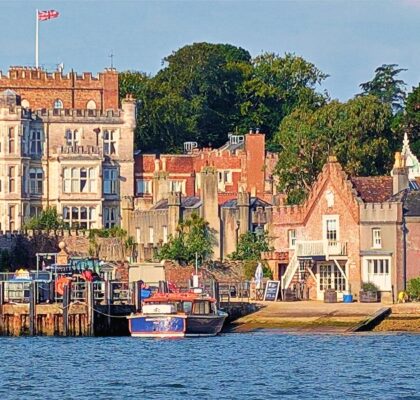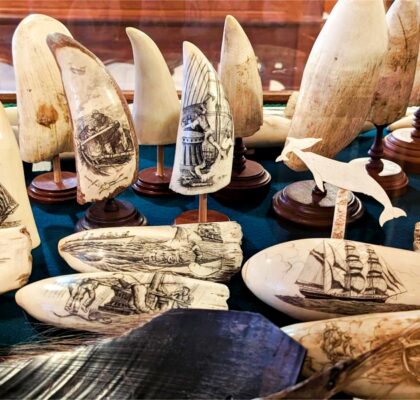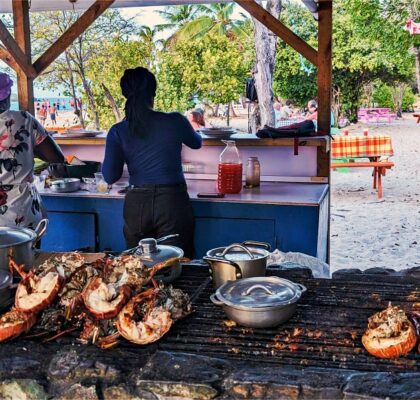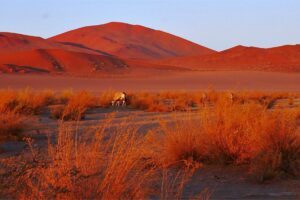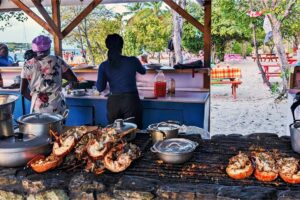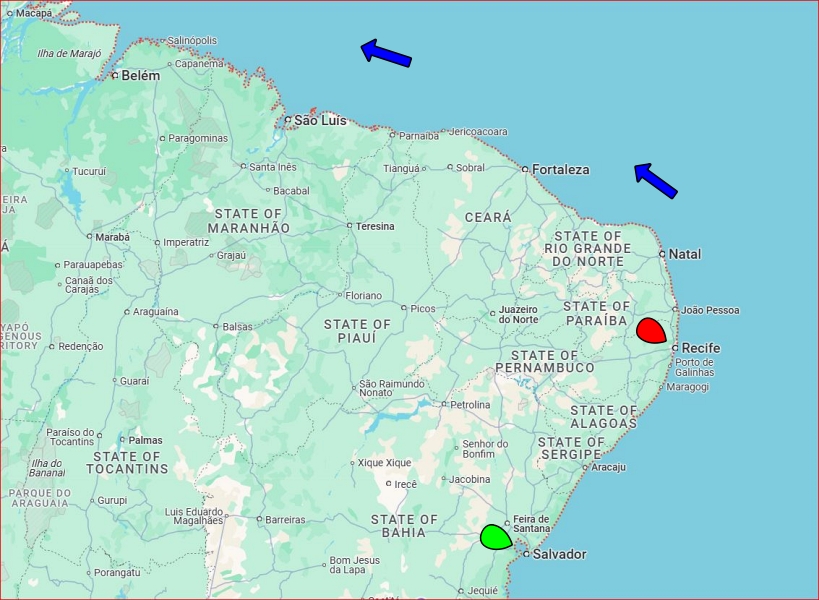
.
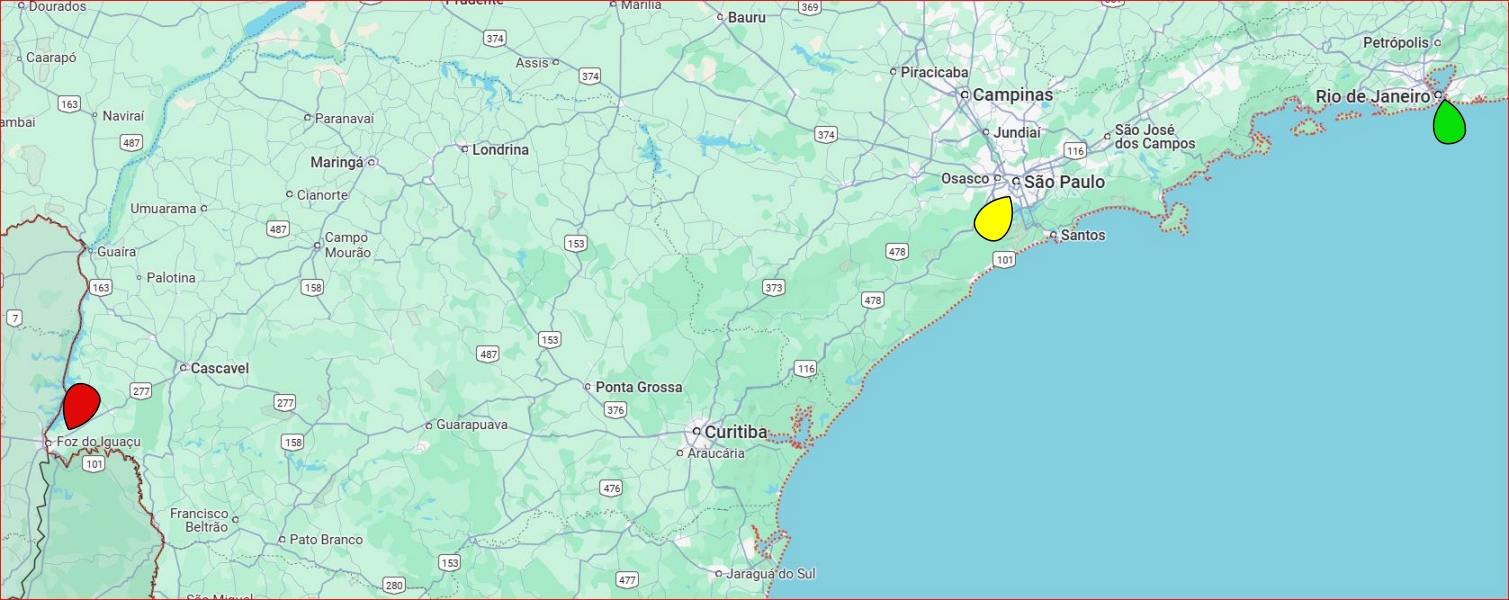
We decided to cross directly from Cape Town to San Salvador in Brazil, 3780 nm which took us 33 days. The time flew past with diy, cleaning, fishing, reading and intensive Brazilian learning. André who had worked in Portugal needed to brush up and to learn Brazilian which is different especially the accent. Fione had to start from scratch! 3-4 hours/day focusing on ‘useful’ vocabulary/grammar enabled her to understand some written Brazilian, say the odd word and phrase but understanding people speaking fast was a different matter! The harbour master in San Salvador was French but elsewhere Brazilian was a necessity. Luckily André was pretty fluent.
In Brazil you must be very careful walking around and not carry money, phones, cameras or wear jewellery. Taxi drivers did not leave us at the marina until they had seen us walk through the security gates. We heeded all the advice and spent a wonderful month seeing only a small part of this vast country where we found the Brazilians most friendly and helpful. In the 1600s Salvador was conquered by the Portuguese and Spanish and became Brazil’s main slave port. The descendants of the Portuguese Gold Coast and Angola make up the bulk of the population and this is reflected in their colourful dress and food. Upon arrival we ate a delicious moqueca at the mercado modelo – a coconut milk based seafood stew and drank a caipirinha. A wonderful start especially after so long at sea! We often ate feijoada, Brazil’s national dish, a black bean stew served with various meats and rice. Churrascarias are restaurants serving different pieces of grilled meat (beef) where you eat as much as you want. Everything in Brazil is extremely reasonable.
We had booked a 10 day organised tour starting with Rio de Janeiro: Corcovado, Sugarloaf Mountain, passing through dense Atlantic rainforest, Rio Scenarium in the Lapa district for live music, singing, people dancing the samba, the celebrated Copacabana beach, the striking Museu do Amanha dedicated to science and technological advancements, a favela, Rio Cathedral… One day we were driven to a reserve outside Rio to see Mico-leão-dourados (tamarin) monkeys who were nearly decimated by yellow fever. You can see them providing you give proof of having been vaccinated against yellow fever. It was very special to be close to these orange monkeys and also learn about the forest restauration project. Charming Paraty further south down the coast is an old colonial town with whitewashed churches, terra-cotta roofs and cobbled streets. By boat we toured the bay stopping at 4 pretty islands. Before flying to Foz do Iguaçu on the Argentinian border we spent several hours exploring Sao Paulo whose cathedral is similar to the one in Liverpool. The Iguaçu Falls, one of the world’s natural wonders, are best visited from both the Brazilian and Argentinian sides. They are set in a vast sub-tropical nature reserve. There are many linking falls up to 75 m in height cascading over a 3 km precipice. . We saw them from both sides including very close up from a dingy in Brazil. They are stunning!
Back in Salvador we took the art deco lift to reach the old town with its restored 17th and 18th century palaces and Baroque churches. We learned about life for slaves by visiting the church Igreja Nossa Senhora do Rosario dos Pretos built by them in C18th. A few days sail north took us to Recife and its mix of skyscrapers, old buildings and crowded markets. The smoothies served, called sucos, are delicious being made with exotic, tasty fruits. On a Sunday the streets were lively with children playing games, stalls selling food and other goods and a live band. Nearby Olinda is a fascinating Unesco world heritage site. Although we had checked in and out in Salvador, each area is independent so we had to repeat the process here. Unlike Salvador where it was quick, we spent a whole day checking in and out going to 3 separate departments, not helped by the last one being closed for 1.5 hours over lunch! As no-one spoke anything but Brazilian it was a good thing that André could communicate. We were the only foreign boat in the marina which had 3 swimming pools, a sauna (in 36C?!!), restaurants, tennis courts, a small football pitch, a gym and so on…..it was obviously the place to be a member of if you were a well to do Brazilian…..hardly anyone owned a boat! We learned a lot about life in Brazil and this society of the very rich and the very poor.
